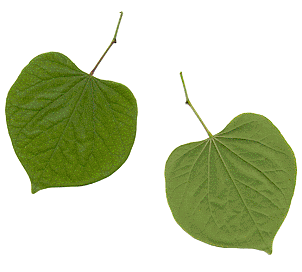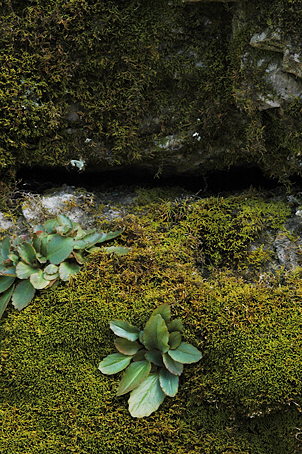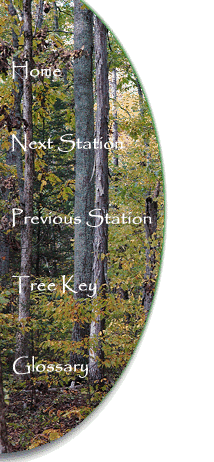| |
|
| |
 |
| |
Eastern Redbud Leaf |
Identification:
The leaves are 3 inches to 5 inches in
length, and are simple,
alternate,
entire, smooth and heart-shaped.
Note the palmate venation in the leaves. The
petiole is swollen at both ends.
Note
the alternate branching on this tree.
| |
|
 |
|
|
Eastern Redbud Bark |
The bark of the Eastern Redbud is
gray-brown, thin and smooth in young trees, and becomes fissured and
scaly on old trees. On large trunks you may be able to see the
orange inner bark.
| |
|
| |
 |
| |
Eastern Redbud Flowers |
The beautiful flowers of the Eastern Redbud appear
early in the spring before the tree leafs out and add a burst of
color to the early spring woods.
Other Uses
and Lore:
The wood is heavy,
hard and close-grained. Because of its small size, the wood is
not used commercially.
The Trail From
Station Five to Station Six
 |
| Fissure in
Limestone Outcrop |
From Station
Five, the trail continues hug the side of the ridge. There are
many limestone outcrops on the left of the trail. These
outcrops have fissures in them that provide homes for many small
mammals, reptiles and amphibians. Station Six will be on
the left side of the trail.
|

